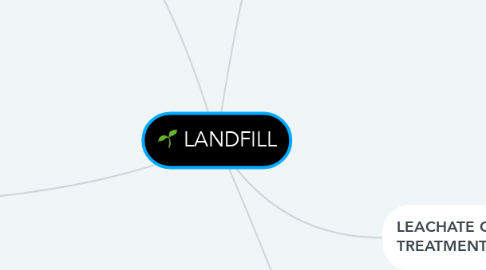
1. TRENCH METHOD
1.1. Typically, cells are excavated to the depths 1 to 3 m, with slope of 2:1 or 3:1
1.2. Suited to areas where an adequate depth of cover material is available at the site.
1.3. Length and width depends on the loading rates and rainfall intensities.
1.4. Trench varies from 60 m to 300 m in length and 15 to 50 ft in width.
1.5. The soil excavated from site is used for daily and final cover.
1.6. Trenches are usually lined with synthetic membrane liners or low permeability clay or combination of 2 to limit the movement of both landfill gas and leachate.
2. GAS RECOVERY
2.1. Bacteria decomposition occurs in five phases and the composition of the gas changes during each phases
2.2. Volatilization created when certain wastes particularly organic compounds, change from a liquid or a solid into a vapour
2.3. Chemical reaction created by the reactions of certain chemicals present in waste. If chlorine bleaches contact with ammonia, a harmful gas is produced
2.4. Phase 1 : initial adjustment
2.5. Phase 2 : transition phase
2.6. Phase 3 : acid phase
2.7. Phase 4 : methane fermentation phase
2.8. Phase 5 : maturation phase
3. GROUNDWATER MONITORING
3.1. Early detection of contaminants in groundwater released from landfill sites helps facilitate timely and effective source control and mitigation
3.2. The landfill received primarily paper waste and construction debris, but it also received asbestos, sewage, and catch tank liquid waste
3.3. Groundwater monitoring results indicate the SWL has contaminated groundwater with volatile organic compounds and possibly metals at levels that exceed regulatory limits.
4. DECOMPOSITION OF REFUSE IN LANDFILL
4.1. BIOLOGICAL REACTION
4.1.1. Leads to the evolution of landfill gasses and eventually liquids
4.1.2. Proceed aerobically for some short period immediately after deposition of the waste until the oxygen initially present is depleted
4.2. CHEMICAL REACTION
4.2.1. Include this solution and suspension of landfill material
4.3. PHYSICAL REACTION
4.3.1. Landfill gas movement and emission
4.3.2. Internal pressure may build causing the landfill cover to crack and leak
5. LEACHATE COLLECTION AND TREATMENT
5.1. Leachate is a liquid that percolated through the waste and has extracted dissolve or suspended materials
5.1.1. Leachate Collection System
5.1.1.1. Gravity flow
5.1.1.2. Submersible pump
5.2. LINER SYSTEM
5.2.1. The base of the landfill should act as a liner with some minimum thickness and a very low hydraulic conductivity
5.3. LEACHATE COLLECTION FACILITY
5.3.1. Collection pipe
5.3.1.1. Bottom pipe
5.3.1.1.1. Trunk line
5.3.1.1.2. Branch line
5.3.1.2. Inclined pipe
5.3.1.3. Vertical pipe
5.3.2. Leachate retention pit
5.3.2.1. Outside
5.3.2.2. Inside
5.3.3. Reticulation pipe
5.4. LAYOUT
5.4.1. Straight line pattern
5.4.2. Herring bone pattern
5.4.3. Ladder pattern
5.5. LEACHATE REMOVAL SYSTEM
5.5.1. Liner penetration
5.5.2. Vertical manhole
5.5.3. Side slope riser pipe

